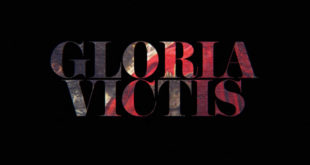Benjamin Bardou has released the making-of for Gloria Victis, which you can watch here:
I emailed Ben with a few questions surrounding the creation of the film.
What is your background and skill set?
I’m living and working in Paris, France. I had an artistic education. I’m specialized in matte painting in VFX industry. You can have a look at my online portfolio: http://ben.bardou.free.fr/
What do you do for a ‘day job’?
Graphist
Your prior work features a lot of both retro and city/suburban themes, why is that?
I think our epoch is stuck in the past, like nostalgic of this brilliant past. Definitely it’s the childhood for my generation (I was born in 1981). For an adult with no future vision (I mean politically in France), it’s easy to get back in the past and hang on familiar things.
Can you tell us what Gloria Victis is about?
Gloria Victis is a thinking about the vanquished in History. All History is written by the winners. The Cour Marly in Louvre Museum is amazing with beautiful sculptures but also, they were commissioned by kings, princes. Sculptures are about sadness or freedom (there is a Spartacus statue in the Cour Marly). So, they were ordered by those who oppress those who are supposed to be the incarnation of these ideas. It’s really interesting. So I decided to make a movie about that and draw into the cinema History some materials about that.
Who did you work with, can you tell us about the team and how it formed, and why?
In the beginning, I was alone. I made some 3D tests with Photoscan and I created a part of the cour Marly.
One day I discussed with one of my colleagues. He’s the owner of a little 3D company in Paris. He was very interested and he proposes me to come in his company. He created a little group of graphists to help me, but not full time (as I was). When we had some free time between two productions we worked on Gloria Victis. In two years of production (one year in total I think), there was 2 modelers, 2 texture artists, 2 compositors, 2 zbrushers and 2 renderers. Each one of them didn’t work full time on the project. One of them worked maybe 1 month and the other one 1 year.
It was a complex organization.
What tools did you use to create it?
We were on Maya/Vray/Photoscan/Nuke/Photoshop
What was the importance of the time-lapse shots to you? Why not a static time of day?
The timelapses were the heart of the film. The Cour Marly was fascinating to me and I wanted to create a mood about passing time.
Can you explain where and why you would use a VRay sun/sky time-lapse over an HDRI image sequence for a time-lapse? The pros and cons?
Vraysun was great because you can place manually the direction of your sun, it’s very easy. But in the animation, in real life, there are many and many alterations with different lighting on each frame that make it real. So, I found Hyperfocal’s HDRIs, and I knew that these materials were perfect for my project.
Was there any post work/supplemental lighting used in addition to the HDRIs?
The first test was good but the Cour Marly is in just like a box with only an opening on the top. Renders were too dark and the sculptures were not highlighted by the light. We create some interior lights which flood the room with light. Composited with HDRs, the result was much better.
How long did it take, the 3d scanning, lighting, animation, etc?
The hard part of the movie was the capture of the sculptures. There was 30 statues to scan. I didn’t have authorization to scan all of these in Louvre Museum. So I have to go to Louvre Museum more than 20 times. For each statue I took 150 photos. Photoscan processing took huge time because I was a beginner on this and I have to make some tests. But the result is very great. I’d like to thank all my team and the Jungler studio, who believed in me. The movie and images that we made are beyond what I dreamed.
Thanks, Ben!
 Hyperfocal Design
Hyperfocal Design

